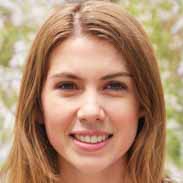Health Education Specialist Flashcards, test questions and answers
Discover flashcards, test exam answers, and assignments to help you learn more about Health Education Specialist and other subjects. Don’t miss the chance to use them for more effective college education. Use our database of questions and answers on Health Education Specialist and get quick solutions for your test.
What is Health Education Specialist?
Health Education Specialists are invaluable to the health care system. They are responsible for educating individuals and communities on health topics, helping them to stay healthy and reduce their risk of disease. Health Education Specialists also work with healthcare providers to ensure that patients receive appropriate education and support.Health Education Specialists provide evidence-based health education programs that meet the needs of individuals, families, and communities. They assess individual medical histories to identify potential health concerns and design educational programs that target these issues. Health Education Specialists develop interactive activities such as lectures, workshops, or courses in order to educate people about ways they can make healthy lifestyle choices. These activities may include promoting a balanced diet or physical activity, encouraging smoking cessation or offering tips on how to manage stress effectively. Health Education Specialists often collaborate with other healthcare professionals such as physicians, nurses, social workers, nutritionists, pharmacists or public health officials when planning educational initiatives for their clients or community members. They may also serve as advocates for policy changes related to public health initiatives within their local area in order to promote healthier lifestyles for all citizens. In addition to providing direct services like patient education sessions or program evaluations, Health Education Specialists engage in research related to the field of public health. This research helps inform new policies and interventions that can be implemented by government agencies in order to improve population-level outcomes related to overall quality of life and well-being. Health Education Specialist positions require at least a Bachelor’s degree in Public Health or a closely related field such as psychology or sociology.










